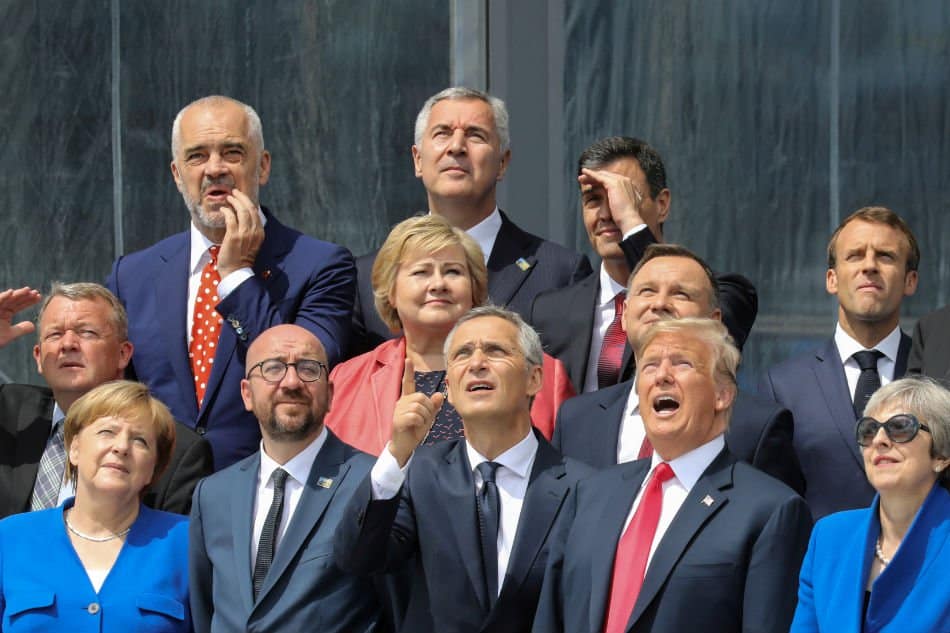
The anxiety leading up to this week’s NATO summit is unusually intense, thanks in large part to President Trump’s fractious relationship with European allies. Trump’s political values are often in tension with that of his transatlantic counterparts, and the White House is inching ever closer to an all-out trade war with Europe and Canada, but the real drama of the NATO summit will center on Trump’s brash accusations of allied free-riding. He recently sent letters to many European capitals berating them for not meeting their pledge to spend at least 2 percent of GDP on defense.
In a post at the International Institute for Strategic Studies, Lucie Béraud-Sudreau and Nick Childs try to push back on the notion that providing for European defense is all that costly for the United States. While it is true that the $602.8 billion the United States spent on its military in 2017 “was the equivalent of 70.1% of aggregate spending by all NATO member states,” this exaggerates the true cost, they argue.
Direct US spending on European defense, by their estimate, is only about $30.7 billion in 2017 and $36 billion in 2018, or between 5.1% and 5.5% of the total US defense budget.
How do they calculate this number? They tally up the cost of three things: (1) direct funding for NATO, including common procurements; (2) the costs of the US military presence in Europe; and (3) US foreign military assistance.
Now, $30-$40 billion every year is nothing to sniff at. That is an enormous chunk of change for an America that is $21 trillion in debt to be spending on the defense of a region that is remarkably rich, powerful, and safe.
The problem, however, is that this understates the true cost of America’s NATO commitments. It is misleading to count the US contribution to NATO solely as a sum of direct annual costs. The tally should also account for the indirect cost of maintaining a military big enough to fulfill our security commitments in Europe. It must account for some share of the permanent force structure that would shift to the reserves, or disappear entirely, if the United States wasn’t pledged to treating an attack on Paris, France or Podgorica, Montenegro as synonymous with attacks on Paris, Texas, or Portland, Maine. This more inclusive count is very difficult if not impossible to calculate with precision, but it is more honest.
Moreover, if the debate about NATO burden sharing boils down to bickering over budget accounting, it would seem like proponents of the status quo are playing hide the ball. The object of US foreign policy is to discourage other countries from spending more on defense. It is disingenuous to pretend otherwise. Free riding is not a bug of US grand strategy, it is a feature of it — a point made perhaps too candidly by the Manhattan Institute’s Claire Berlinski: “How is it, then,” she asks, “that suddenly, we’re consumed with rage that Europe is ‘taking advantage’ of us? How have we forgotten that this is the point of the system? We designed it this way…”
She’s right. As Hal Brands, one of the leading scholarly proponents of America’s post-war grand strategy, explains in his book American Grand Strategy in the Age of Trump, the United States provides “protection that allows other countries to underbuild their militaries.” Or, as Christopher Layne writes in his book The Peace of Illusions, Washington “used NATO…to foreclose the possibility that the West European states would re-nationalize their security policies.”
If America is going to have a debate about security guarantees, it must be an informed one. It should not rest on downplaying the true costs of such policies, nor should it pretend that free riding is some kind of mistake. It seems rather futile to defend the strategy by arguing against its very logic.
Reprinted with permission from Cato.org.

